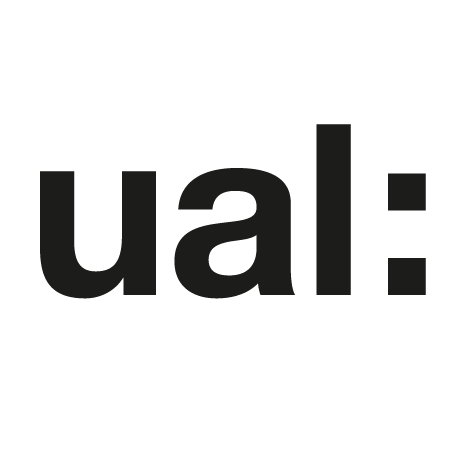
Creative projects as a way of bringing students together
An institution-wide creative project is an opportunity for students to make friends and learn from one another, writes Karen Amanda Harris. Here, she shares tips for developing an extracurricular language-art project
You may also like
Popular resources
Language is something we all have – and yet everybody experiences it uniquely. It has the capacity to build bridges and chasms, to clarify and to obfuscate. It can create an instruction manual or wild, enigmatic poetry. When tapping into the linguistic resources of a cross-cultural student community, the creative potential is limitless.
This is why I focused on language when pioneering an extracurricular project at University of the Arts London (UAL) designed to bring diverse students together to create art exploring linguistic themes.
The UAL Language-Art Project invites students from all subject disciplines and nationalities to come together and create in any viable medium, delving into the many facets of this beautiful, exasperating, subtle, potent and magical thing we call “language”. Students create the work in their own time, either collaboratively or solo. Their submissions are showcased in a yearly online exhibition, with follow-up activities such as student-led webinars and podcast interviews.
- Resource collection: Creativity in higher education
- The summer life of a teacher can be a boon for creativity in the classroom
- How a rich extracurricular campus life nurtures well-rounded individuals
Could this kind of project work outside an art-and-design-based institution? Yes, absolutely. There is no monopoly on imagination, the creative urge or technical know-how. Tapping into students’ creativity brings multiple benefits in terms of their learning, well-being, social connections and cross-cultural understanding. Each student becomes aware of having something valuable to contribute, something that they – and only they – can bring to the table.
Here, I share key steps and considerations for implementing such a language-art project, based on my experience of developing the scheme from scratch, having piloted the initial concept in 2019.
Setting the time frame
Give yourself plenty of time for each stage of the project. Remember that this is being done as an add-on for the students and for you, so it must be completed around your day-to-day work. We run the language-art project through the spring and summer terms, with follow-up activities continuing into July.
This rough schedule works for us.
- January: initial call-out; gathering expressions of interest
- February to mid-April: meetings; art creation
- Mid-April: art submission; compiling and categorising
- Late April to May: building the online gallery
- May to June: publishing and promoting the gallery via internal and external communications teams
- June to July: follow-up activities such as webinar presentations and live “hands-on” events
Running the project
For the initial call-out, you want maximum reach. Use whatever communication channels and tools are available to you, such as email, physical notice boards, social media and other digital forums. In the absence of a student-facing university-wide intranet, I use my department’s Moodle to email all UAL students.
Emphasise the project’s inclusivity; it is available to all students, whether foundation, undergraduate or postgraduate, home or international. The project requires commitment outside students’ scheduled studies, so it is important to highlight the potential benefits. Promote it as an opportunity on several levels: social, creative and intellectual.
In 2022, I received almost 100 expressions of interest in response to this email. Of these, 23 submitted an eventual artwork for the gallery – similar numbers to the previous year.
The next step is to create a forum for posts and file-sharing, plus a meeting platform. Ensure that the technology you use is easily accessible and user-friendly, so it doesn’t create a barrier. I use Microsoft Teams for the forum, and Blackboard Collaborate for meetings.
For meetings
- Offer a choice of days and times, as students’ schedules vary.
- A meeting every 2.5 weeks, or thereabouts, strikes the right balance of keeping the momentum but not overloading participants. Attendance is enjoyable and beneficial but never compulsory.
- Offer provocations to get creative thoughts flowing. Examples include: can a language ever really be translated? Should languages be protected from change? What language do you dream in? Does language influence the way we think? Is academic English a whole other language?
- A mix of written responses through Padlet and chat boxes and spoken discussion among the whole group or in breakout rooms is ideal. This supports a relaxing atmosphere among students who may be strangers.
- As the project progresses and the exhibition pieces start to take shape, invite students to share their work in progress. This supports their own self-reflection as well as inspiring others and facilitating discussion.
Two crucial shared documents to create
- Introductions and initial ideas. This enables students to find like-minded partners for potential collaboration or simply to share ideas together.
- Who’s doing what? This comes a little later, once the project is under way. It shows which students plan to submit work, plus their (provisional) title, medium and concept.
After submission
- Allow a couple of weeks for checking and resolving issues.
- Sort the artwork into categories. This is fascinating, as I’ve found themes arise organically – with no intent or intervention on my part. In 2021, a theme was multilingual, collaborative poetry. In 2022, it was challenging the notion that language needs words.
Creating the gallery
The possibilities here will vary depending on your institution’s digital resources. In 2021, our gallery was constructed by UAL’s digital communications team. However, in 2022 they constructed the landing page only, while the four category pages were created by myself and a student assistant. We used our in-house Workflow software, built on the Mahara ePortfolio system. This was initially fiddly and awkward but with practice, we found it gave reasonable flexibility in curating the gallery. We could control sizing and layout, and vary the amount of text. Mobile view, however, remains jumbled and incomplete. Hence we added a “desktop view only” caveat to the landing page.
In future, we may explore externally hosted sites that are optimised for exhibiting artwork. If building the site yourself, take time to research which web platforms offer functionality and designs that suit your needs. Many of the vast range of providers are designed for beginners in website building.
Core essence
While the gallery is a grand culmination, it is not the project’s raison d'être. What matters is the coming together of students: bridging the divides between courses, interests, knowledge and cultural and linguistic backgrounds. A student might create a work collaboratively, solo or not at all. And that is fine. The project’s core essence is that by participating at any stage, that student gains new insights, perspectives and friends. In the words of one of our 2021 cohort: “It’s a sharing of intention, sharing of inspiration, sharing of moments…and being connected with another being.”
Karen Amanda Harris is an intercultural communications trainer and language development tutor at University of the Arts London.
If you would like advice and insight from academics and university staff delivered direct to your inbox each week, sign up for the Campus newsletter.





Comments (0)
or in order to add a comment